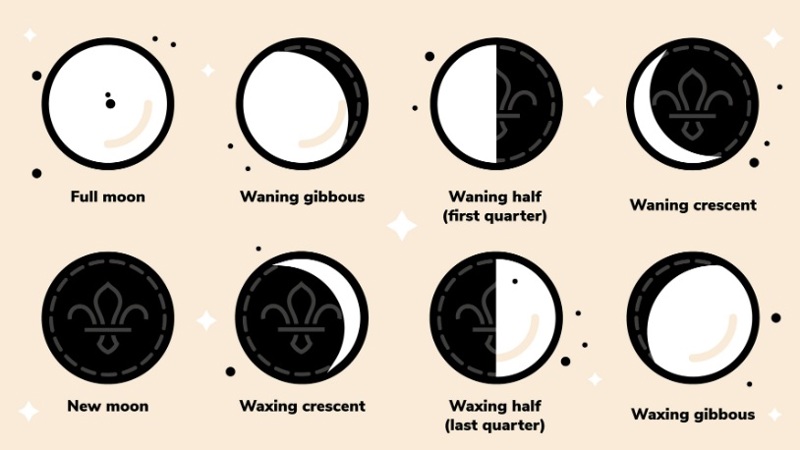Scouts on the Moon
Moon fever is once again sweeping the world as NASA plans to launch the Artemis I mission. We catch up on all the latest – and find out why there are Scout badges on-board the latest Moon shot.
- 11 of the 12 people who've walked on the Moon were Scouts.
- In 2020, UK Scouts hiked to the Moon (and back!) to raise funds for Children in Need.
- Carry on reading to discover more about the fascinating history of Scouts and the Moon!
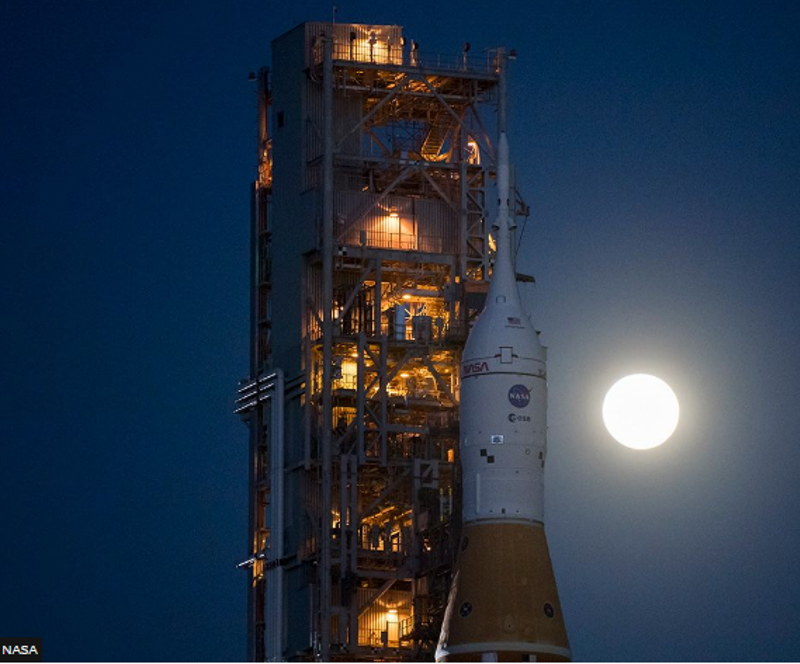
This paves the way for a human landing in 2025. It'll be 53 years since Apollo 17 sent the last astronauts, Gene Cernan and Jack Schmitt, to the lunar surface. Cernan and Schmitt were both Scouts, too!
Although the mission is called Artemis I, the huge rocket on the launch pad at Kennedy Space Center is called Space Launch System (SLS).
It'll lift off with its Orion spacecraft from launch pad 39B on a 42-day mission to the Moon and back.
This is the same launch pad used for the Apollo 10 mission in early 1969. The Apollo 10 mission put astronauts (and Scouts) Thomas Stafford, John Young and Gene Cernan into orbit around the Moon before the Apollo 11 landing later that year.
The first of three new missions
Artemis I will be the first of three new Moon missions. The second is planned to launch in 2024, with a human crew orbiting the Moon.
Artemis III finally takes a crew of four to the lunar surface in 2025, when two astronauts make the trip down to the Moon’s South Pole. This'll use the SpaceX Starship lander to reach the surface.
The Artemis III Mission is also set be the first to put a woman on the Moon.
Although the rocket looks similar to the Apollo spacecraft from the 1960s and 70s, the Artemis missions will be using cutting-edge technology and a novel method to reach the Moon. The SLS rocket will take the four astronauts in the Orion spacecraft to a small space station called Gateway – a lonely outpost in lunar orbit.
The astronauts will board the space station, then await the arrival of the SpaceX Starship, which will dock with the space station. Two astronauts will then climb aboard the lander and descend to the Moon, spending nearly a week on the surface.
They'll be collecting samples, including of lunar ice. They’ll also set off on a road trip in a lunar rover to explore the South Pole before reboarding the lander and returning to the Gateway in preparation for their trip back to Earth.
Scout badges will be on board
Instead of a human crew, the first Artemis mission will take a surprising selection of objects to the Moon, including a ‘Moonekin’. The 'Moonekin' is a mannequin fitted with sensor pads and will be used test the effects of the flight.
They'll also be taking the first sheep into outer space – Aardman’s Shaun the Sheep!
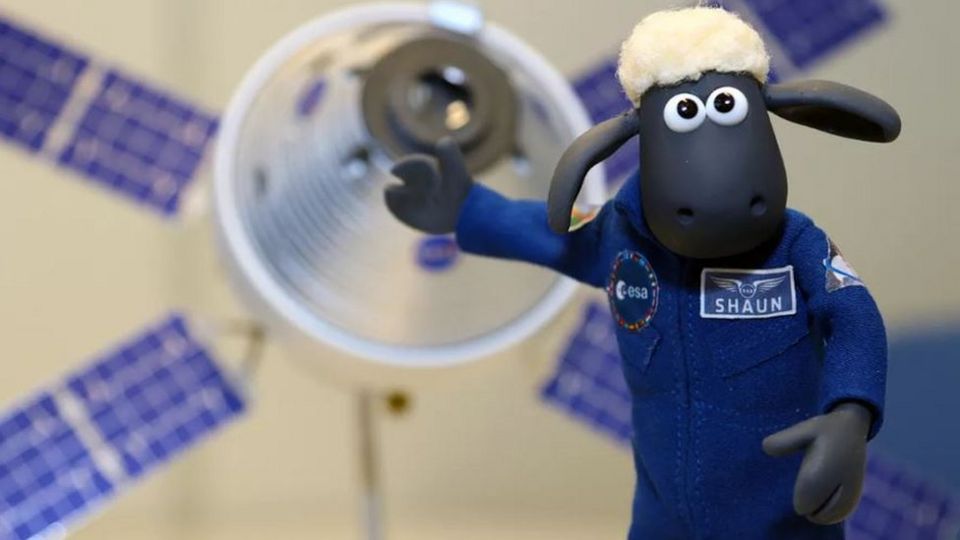
Shaun the Sheep's a good friend of ours at Scouts. Don't forget you can find him complete with necker, backpack and magnifying glass ready for his Scouts adventures in his range at Scout Store!
Of particular interest to Scouts will be a set of Girl Scout space science badges, which will also make the trip to the Moon.
The 90 badges will be awarded to the winners of an essay-writing competition, called ‘To the Moon and Back’, which asked young people to imagine their role in the Moon mission.
However, these are not the first Scout badges to travel to the Moon.
Neil Armstrong, the first person to walk on the Moon, was a Scout in Troop 25 from Sandusky, Ohio. He went onto become an Eagle Scout, the highest accolade for a young person in US Scouts.
To pay respect to the Scout movement, he took a World Membership Badge to the Moon.
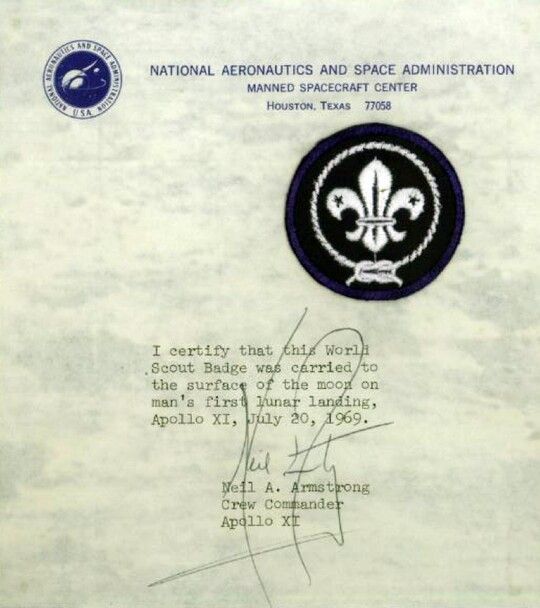
The badge is now in the safekeeping of the World Organisation of the Scout Movement, along with a letter of authenticity that is signed by Neil Armstrong. It reads: ‘I certify that this World Scout Badge was carried on the surface of the Moon on the first lunar landing, Apollo XI, July 20, 1969’.
Our Hike to the Moon
To commemorate the 50th anniversary of the first Moon landing, we issued a set of badges called ‘Scouts on the Moon’ in 2019, not knowing what would happen next.
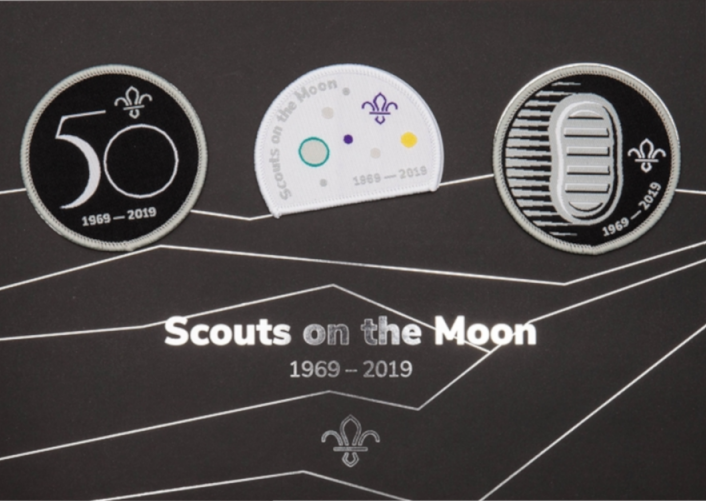
In 2020, UK Scouts made a surprise return trip to the Moon as part of their mission to raise funds for Children in Need’s Night In Appeal, which supported communities worst hit by the pandemic.
During the monumental Hike to the Moon, Scouts raised a whopping £376,000, including badge sales, which was match-funded by the government to £750,000.
Scouts hiked more than 440,000 miles to the Moon and back with trips up and down their staircases, laps of their gardens and local parks. An incredible effort!
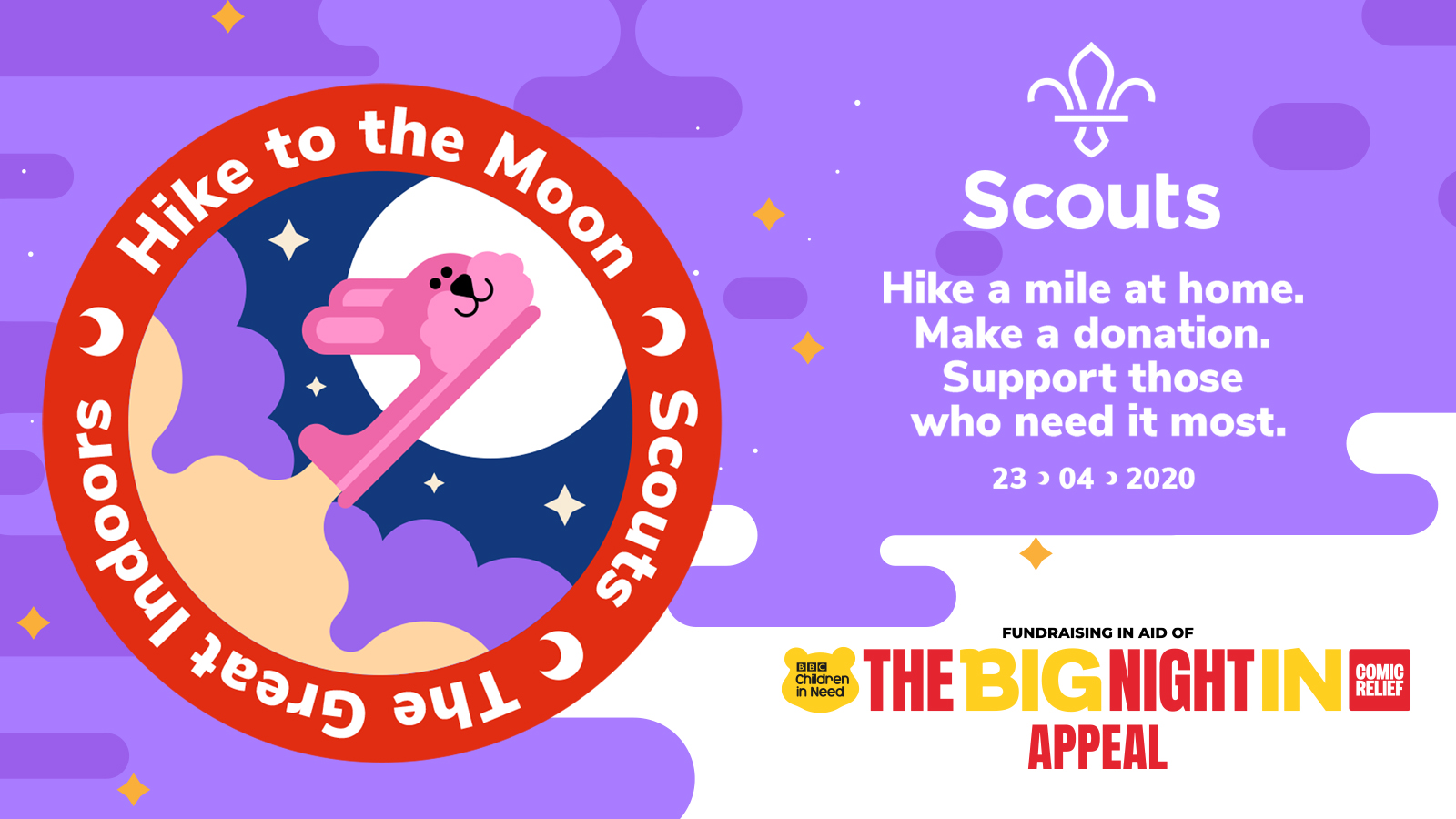
Scouts in space
Since NASA's formation in 1958, 181 of the 320 pilots and scientists selected by NASA were Scouts.
Of the 24 people to travel to the Moon on the Apollo missions, 20 were Scouts, including 11 of the 12 Moonwalkers.
All three of the Apollo 13 astronauts, who had to abort their mission and return to Earth were also Scouts.
Three Scouts astronauts have travelled to the Moon twice.
But these great feats of exploration came at a cost. All three of the astronauts who died in the Apollo I fire, four of the seven who died in the Space Shuttle Challenger, and five of the seven who died in the Space Shuttle Columbia were Scouts.
These future missions honour their memory and continue to inspire a new generation of Scouts looking up to the Moon.
The next Scout on the Moon?
Who knows which Scouts will land on the Moon next?
Scout Ambassador Tim Peake says: ‘I’d love to be on one of those Artemis Missions, for sure. The International Space Station is a wonderful place to live and work, but as a test pilot, getting up on one of those early Artemis missions would be the absolute pinnacle’.
